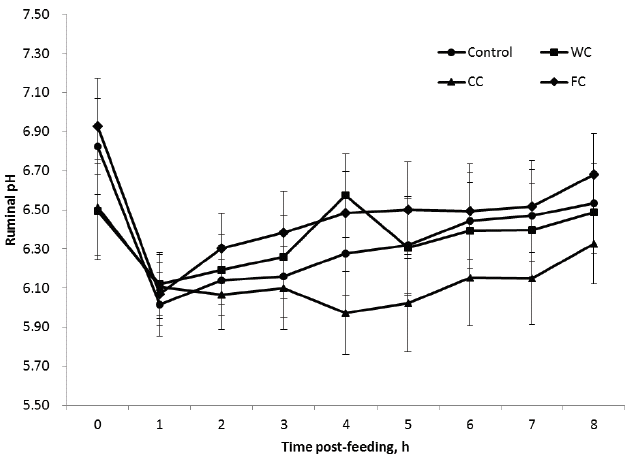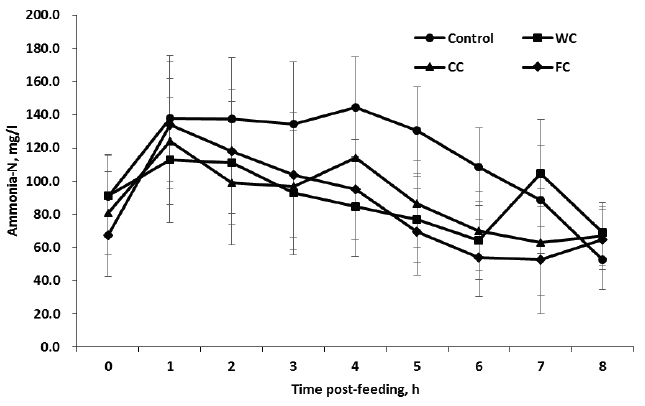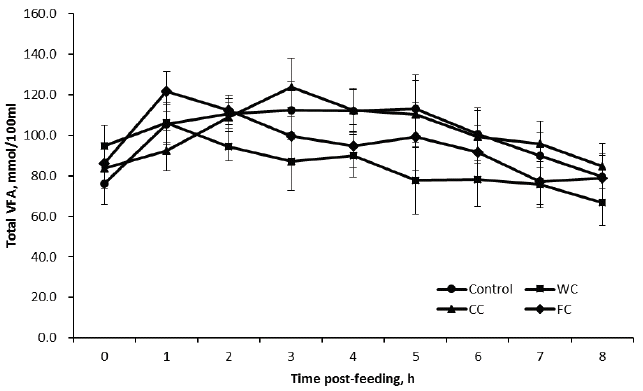1. Lee SY, Kim WY, Ko JY, Ha JK. Effects of corn processing on
in vitro and
in situ digestion of corn grain in Holstein steers. Asian-Australas J Anim Sci 2002; 15:851–8.


2. Owens FN, Secrist DS, Hill WJ, Gill DR. The effect of grain source and grain processing on performance of feedlot cattle: A review. J Anim Sci 1997; 78:369–75.

5. Koenig KM, Beauchemin KA, Rode LM. Effect of grain processing and silage on microbial protein synthesis and nutrient digestibility in beef cattle fed barley-based diets. J Anim Sci 2003; 81:1057–67.


7. Reinhardt CD, Brandt RT, Eck TP, Titgemeyer EC. Performance, digestion, and mastication efficiency of Holstein steers fed whole or processed corn in limit- or full-fed growing-finishing system. J Anim Sci 1998; 76:1778–88.


8. Zinn RA, Owens FN, Ware RA. Flaking corn: processing mechanics, quality standards, and impacts on energy availability and performance of feedlot cattle. J Anim Sci 2002; 80:1145–56.


9. Park DW, Hwangbo S, Han OK, Jo IH, Choi CW. A study on establishment of nutrient requirement for maintenance of Hanwoo cow under heat stress. J Agric Life Sci 2015; 49:225–35.

10. Cho YK, Choi SH, Han OK, Park JH, Choi CW. A study on changes in feed digestibility and establishment of energy requirement for maintenance of growing Hanwoo steers under severe heat stress. J Agric Life Sci 2016; 50:163–72.

11. AOAC. Official Methods of Analysis. 15th edArlington, VA, USA: Association of Official Analytical Chemists; 1990.
12. Van Soest PJ, Robertson JB, Lewis BA. Methods for dietary fiber, neutral detergent fiber and non-starch polysaccharide in relation to animal nutrition. J Dairy Sci 1991; 74:3583–97.


13. Choi CW, Oh YK. Effects of feeding whole crop rice silage harvested at different stages on rumen fermentation and blood metabolites in Hanwoo steers. J Korean Soc Grassl Forage Sci 2011; 31:191–200.


14. Bilby TR, Baumgard LH, Collier RJ, Zimbelman RB, Rhoads ML. Heat stress effects on fertility: Consequences and possible solutions. In : 23rd Annual Southwest Nutritional and Management Conference; 2008 February; Tucson, AZ: USA.
15. Tajima K, Nonaka I, Higuchi K, et al. Influence of high temperature and humidity on rumen bacterial diversity in Holstein heifers. Anaerobe 2007; 13:57–64.


16. Coppock CE. Feeding energy to dairy cattleCoppock CE, editorLarge Dairy Management. Gainesville, FL, USA: University Presses of Florida; 1978. p. 265–8.
17. McDowell RE, Hooven NW, Camoens JK. Effects of climate on performance of Holsteins in first lactation. J Dairy Sci 1976; 59:965–73.

18. Johnson HD. Depressed chemical thermogenesis and hormonal functions in heat. In: Environmental physiology: aging, heat, and altitude. New York, USA: Elsevier/North Holland; 1980. p. 3–9.
19. Galyean ML, Wagner DG, Owens FN. Corn particle size and extent of digestion by steers. J Anim Sci 1979; 49:204–10.

20. Nordin M, Campling RC. Digestibility studies with cows given whole and rolled cereal grains. Anim Prod 1976; 23:305–13.

21. Bowman JGP, Firkins JL. Effects of forage species and particle size on bacterial cellulolytic activity and colonization
in situ
. J Anim Sci 1993; 71:1623–33.



22. Erdman RA, Proctor GH, Vandersall JH. Effect of rumen ammonia concentration on
in situ rate and extent of digestion of feedstuffs. J Dairy Sci 1986; 69:2312–20.


23. Tamminga S. The effect of the supply of rumen degradable protein and metabolisable protein on negative energy balance and fertility in dairy cows. Anim Reprod Sci 2006; 96:227–39.


24. Kim KH, Kim KS, Lee SC, et al. Effects of total mixed rations on ruminal characteristics, digestibility and beef production of Hanwoo steers. J Anim Sci Technol 2003; 45:387–96.

25. Armentano LE, Bertics SJ, Riesterer J. Lack of response to degradable protein to a low protein diet fed to midlactation datiry cows. J Dairy Sci 1993; 76:3755–62.


26. Choi CW. Effects of CNCPS fraction-enriched proteins on ruminal fermentation and plasma metabolites in Holstein steers fed TMR containing low protein. CNU J Agric Sci 2015; 42:237–44.


27. Campell MK, Farrell SO. Biochemistry. 4th edBelmont, CA, USA: Thomson Brooks/Cole; 2003.
29. Vernon RG. Control of lipogenesis and lipolysisBoorman KN, Buttery PJ, Lindsay DB, editorsThe control of fat and lean deposition. Butterworth, Heinemann, Germany: Oxford; 1992. p. 59–81.












 PDF Links
PDF Links PubReader
PubReader ePub Link
ePub Link Full text via DOI
Full text via DOI Download Citation
Download Citation Print
Print





